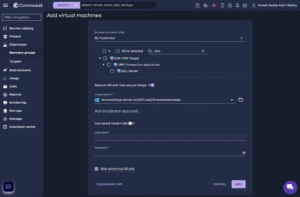
Commvault at the 2025 RSA Conference today added a “factory reset” capability to its CleanRoom Recovery service that provides IT teams with a pre-defined, validated, clean image of their IT infrastructure that can be customized to specific points in time.
Additionally, Commvault also announced it has extended an alliance through which the data protection capabilities it provides are now integrated with a set of incident response services provided by CrowdStrike.
Finally, Commvault also revealed that its Commvault Cloud has achieved GovRAMP Authorized status that government agencies require before being allowed to employ software-as-a-service (SaaS) applications.
Commvault Global CTO Brian Brockway said the Commvault CleanRoom Recovery services has been gaining traction as a disaster recovery service that, for example, in the event of a natural disaster or ransomware attack makes it possible to quickly rehydrate systems, including data sets that have already been scanned for malware.
That capability is crucial in an era where many organizations are not able to generate revenue if key applications and systems are unavailable, he added.
The Commvault Cleanroom Recovery cloud service already provides IT teams with an ability to test recovery plans and instantly identify the last clean recovery point. IT teams can also customize recovery sequences, so data is recovered in a logical order based on dependencies between applications and the underlying IT infrastructure.
That capability makes it possible for Commvault to via a cloud service provide deliver both backup and disaster recovery services versus requiring IT organizations to contract the services of two different vendors, noted Brockway.
In general, both of these functions are managed by IT operations teams, but there is a clear need in the age of ransomware for tighter integration with cybersecurity workflows. Ideally, any time a ransomware attack is detected, organizations would be able to access pristine copies of data in a way that keeps downtime to absolute minimum. The challenge is cybercriminals now routinely look to encrypt the data that organizations are counting on to thwart those attacks before compromising the primary system running their applications. IT teams need to regularly test backups to ensure that data can be recovered in an organization’s most urgent time of need.
Achieving that goal requires an ability to ensure that images and data are recovered in the right order at the right time, noted Brockway.
It’s not clear how closely IT operations and cybersecurity teams are working together to thwart ransomware attacks but given their ongoing prevalence, it’s clear there is still room for improvement. The challenge is the more dynamic IT environments become, the more difficult it is to recover. Commvault is making a case for a cloud service that, at the very least, gives IT teams the ability to specify an instance of their IT environment that will enable the organization to continue to operate.
Ultimately, each organization will need to determine how often to update its clean room environment, but at a time when there is a greater appreciation for cyber resilience, there has arguably never been a greater appreciation for the need to recover applications and data as adroitly as possible.


